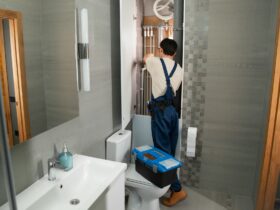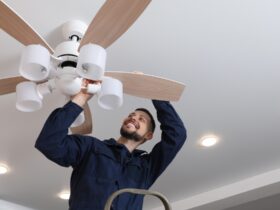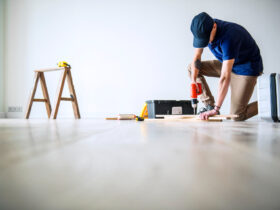Homes are built to provide comfort, security, and peace of mind. Yet, no matter how well-maintained, even the most solid structures encounter problems. Some of these can wait for scheduled maintenance, while others demand immediate action. Delaying repairs not only worsens the condition but often drives up costs and puts the household at risk. From structural wear to unseen leaks, these issues have a way of quietly growing into costly disasters. Recognizing and responding to them without delay is one of the smartest ways to preserve the integrity and safety of any home.
Ceiling Leaks
Among the most concerning signs of internal damage is the appearance of a ceiling leak. A water stain might seem harmless at first glance, but it often signals a deeper problem involving plumbing or roofing. Water that infiltrates the ceiling can weaken structural components, invite mold growth, and damage electrical wiring. One of the most common causes of this is a deteriorating or compromised roof. When roofing materials break down, water finds its way into the attic and seeps downward. This makes it critical to get a roof the moment a leak appears, especially if there has been recent severe weather. Left alone, a minor stain can quickly lead to sagging ceilings, unsafe conditions, and skyrocketing repair bills.
Cracks in the Foundation
A small crack along the base of a home may not seem alarming, but it can be an early warning sign of serious structural issues. Foundations are designed to support the entire weight of a building, and when cracks appear, they often signal that something beneath the surface is shifting. These shifts may stem from soil movement, poor drainage, hydrostatic pressure, or even natural settling. Over time, what begins as a barely visible line can widen and deepen, weakening the structural integrity of the entire home. Water can seep into these cracks, leading to basement flooding, mold growth, and damage to flooring or walls. In colder climates, freeze-thaw cycles can expand the damage even more rapidly. Cracks also create easy entry points for pests and can impact the alignment of doors and windows, causing them to stick or not close properly. Any sign of expanding gaps or a pattern of multiple fractures spreading along walls should prompt an immediate structural assessment.
Faulty Electrical Systems
Flickering lights, frequent breaker trips, and warm outlets can all point to trouble within a home’s electrical system. These aren’t minor nuisances—they’re potential fire hazards. Old wiring, outdated panels, or overloaded circuits need urgent attention. Many house fires begin this way, particularly in older homes with systems not built to handle today’s energy demands. A qualified electrician can pinpoint and resolve the danger before it escalates. It’s never wise to overlook signs of electrical stress; the risk of damage or harm increases with every delay.
Burst or Frozen Pipes
Plumbing failures don’t always give warnings. One winter night can be all it takes for a frozen pipe to crack and flood an entire floor. Burst pipes release gallons of water per minute, soaking drywall, ruining flooring, and even compromising the structural framework. Homeowners should take action at the first sign of reduced water flow or frost along exposed pipes. Shutting off the water supply and calling a plumber quickly can reduce the extent of the damage. Professional plumbing repair services can respond swiftly to prevent further destruction and restore functionality. Waiting until water floods through the walls leaves very few cost-effective solutions.
Pest Infestations
Unwanted guests such as termites, rodents, and carpenter ants can quietly destroy a home from within. These pests don’t wait for permission—they chew through wood, insulation, and wiring with ease. Once a colony is established, the damage accelerates. Termites, for instance, can hollow out wooden beams until they collapse under stress. Rodents may spark electrical fires by gnawing through cords. At the first sign—droppings, strange noises in the walls, or sawdust trails—extermination services should be called. A small problem that’s easy to fix in its early stages can become a months-long nightmare if left to grow.
Blocked or Damaged Drainage Systems
Water pooling near the foundation, slow-draining sinks, and foul smells coming from the yard often trace back to blocked or damaged drainage systems. Whether it’s a clogged sewer line or a collapsed storm drain, these issues can create serious hygiene risks and erode the property’s foundation over time. Heavy rains only make matters worse. Drainage systems are often out of sight and easy to ignore, which makes regular inspection and quick response critical. Ignoring standing water or gurgling pipes often leads to emergency excavation and costly repairs.
Some home issues creep in quietly, others strike without warning, but all share one thing in common: they demand attention. Ceiling leaks, foundation cracks, electrical hazards, burst pipes, infestations, and drainage failures each pose a unique threat. Addressing them as soon as they’re detected can prevent damage, save money, and preserve a safe living environment. Procrastination doesn’t make these problems disappear—it gives them time to grow. For homeowners, taking early action isn’t just a repair decision; it’s a commitment to the safety and longevity of the place they call home.







Leave a Reply